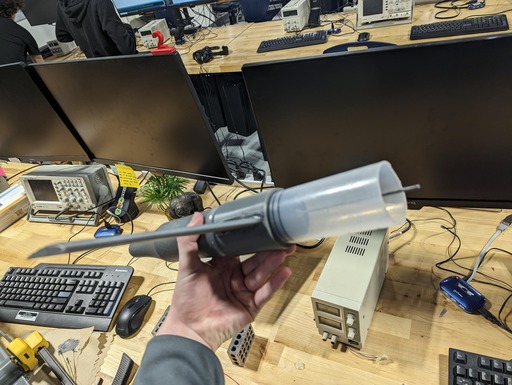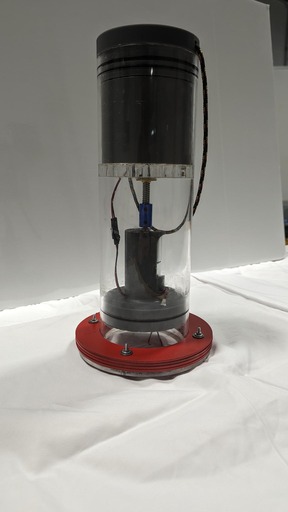Float Project Update (06/05/2023)
Introduction
I have been working on a vertical profiling float for the MATE ROV competition for the past few months. In that time we have gone through two iterations. The current float we have can reliably do vertical profiles, but the communication will be reworked next year because of some interference issues we had with the water.
Since the last blog post I have started working with Ben Wirz on the project. Which has allowed for much faster progress. While there is overlap in both of our jobs, he usually focuses on the exterior of the float while I focus on the interior.
First Float Iteration
I wrote about the first iteration in my blog post from October of 2022 The first iteration was based around a large syringe, and used the syringe seal. We found that there were numerous issues with that design. The housing was too small to fit the electronics in confortably, and we could not get a strong enough motor to fit. We also could not find a safe way to have a pressure release without flooding the float.

Second Float Iteration
We kept the parts that the last float did well. It had one enclosure, and a simple design. We decided to use a 4in diameter acrylic tube for the enclosure, we made a coustom dynamic o-ring seal. We used the parker o-ring handbook and an o-ring calculator to get the dimensions we needed around the o-ring.
We then modeled the seal in Fusion360, and printed it using a resin 3D printer. It took a few attempts but we were able to get a very reliable o-ring seal with minimal friction.

Issues
We have had some problems with the second float iteration. The motor we were originally using was not strong enough to do a full profile at 12 feet. We did not realize this at first because we were testing it in three foot deep water.
We had issues with the communication part of the task because we used all of our time getting the profiles to work. We had communication code that worked perfectly on land using the Raspberry Pi Pico’s internal antenna, but when we tried it in the water it did not work. I did not realize how well water absorbs RF.
Moving Forward
Next year I am going to switch the float’s communication from WiFi to a ham radio band that is not absorbed by water. I plan on getting my ham radio license and doing something either with RTTY or Packet Radio on the float next year.